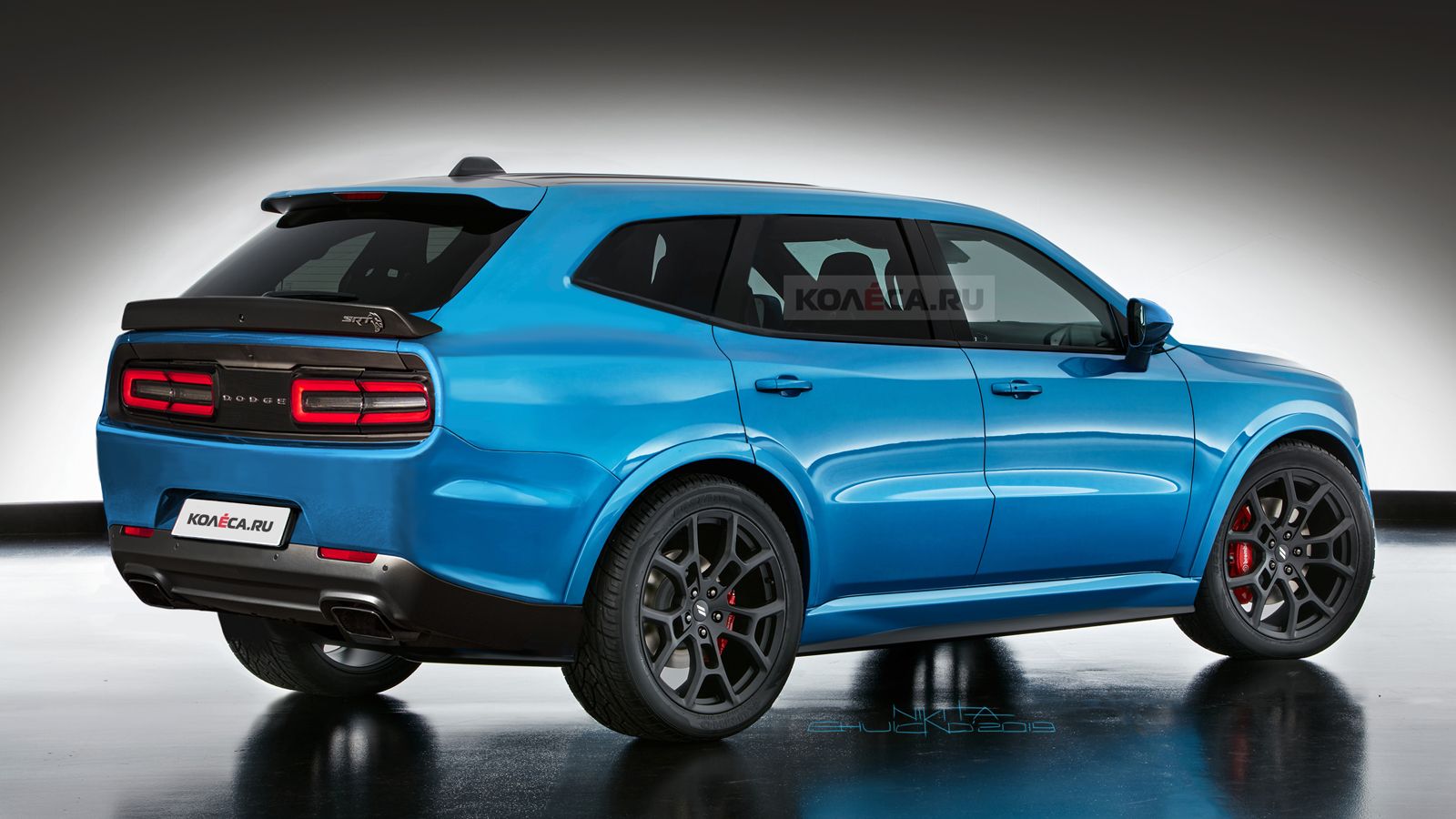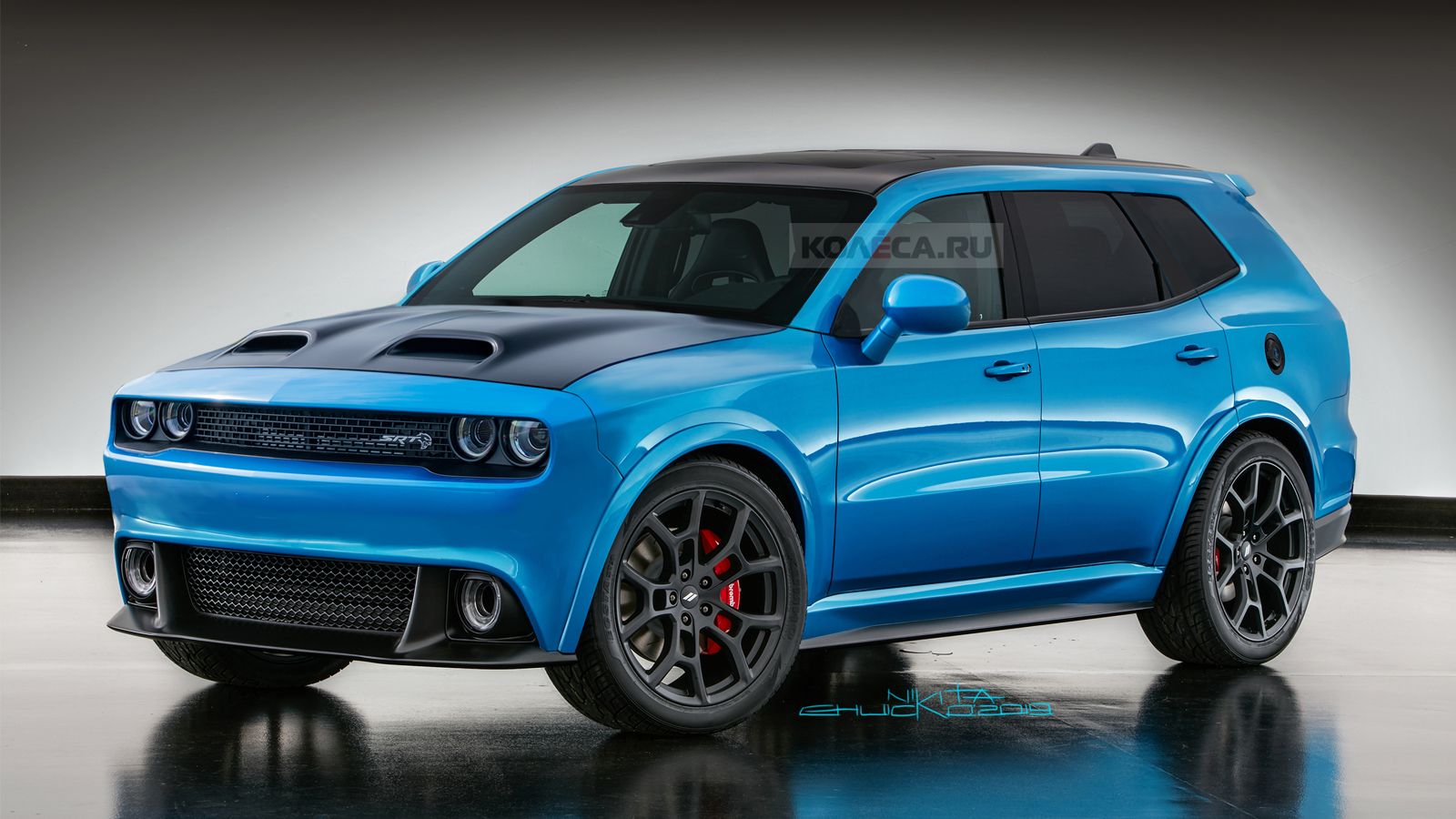You would think that a car as iconic as the Dodge Challenger would be immune to the whimsical minds of those who render “what-if” vehicles for a pastime. But as is often the case in the auto industry, perception isn’t always reality. No car is immune to the creativity of renderers, especially when there’s an opportunity to present Dodge’s iconic muscle car in a whole new light, like, say, an SUV. This is the Dodge Challenger SUV, folks, as presented by our mates over at Kolesa.ru. It’s probably not what you expected, but the rendering is interesting, to say the least. Heaven forbid that Dodge sees this and decides that it wants to build. A rendering of a Dodge Challenger SUV is fine; building a real one is not. Don’t fall to the temptation, Dodge!
Dodge Challenger SUV Rendering
It says a lot about the surging popularity of crossovers and SUVs that every vehicle with a recognizable face and/or name is getting reimagined as a high-riding utility vehicle. Don’t get me wrong; I’m a fan of this exercise. In some ways, these renderings have become things that we all look forward to. It’s one thing to imagine a coupé or a sedan getting the crossover/SUV treatment in our heads. It’s another thing entirely to see a rendering of it on our computer screens. It’s also a great way for artists to play around with their creative juices. Automakers have even noticed some renderings, and while they probably won’t admit to getting “inspired” by them, I’m willing to bet that they have. It’s a win-win-win scenario from all fronts.
That being said, these renderings don’t always get 100 percent approval ratings.
I mention all of this because this rendering of a Dodge Challenger SUV brought out so many mixed emotions out of me. It comes by way of Kolesa.ru, and I found it interesting at first glance. But the more I looked at it, the less enthusiastic I became. I know some of you will disagree with me on this, but I find this rendering a bit too forced, particularly in the way the Challenger’s iconic retro look got stuffed into an SUV’s body with little attention paid to making it look more unique than the real Challenger.
But as an SUV? That’s where I draw the line.
Then there’s Ford. We already know that the Blue Oval is planning to develop a fleet of crossovers/SUVs that will be based on its iconic muscle car. We don’t know enough as far as the designs of these models goe, but we do know that Ford is going all-out on the project with plans to offer gas-powered, hybrid, and all-electric versions. There’s even talk that Ford will adopt the “Mach-E” name on the all-electric, ‘Stang-based crossover/SUV.
All of this is to remind all of you not to shut the door on Dodge going down the same road.
Dodge Challenger SRT Demon drivetrain specifications
|
ENGINE |
SUPERCHARGED 6.2-LITER HEMI DEMON V-8 |
|---|---|
|
Displacement |
370 cu. in. (6,166 cu.cm) |
|
Power (estimated SAE net) |
840 HP @ 6,300 RPM (Direct Connection Performance Engine Controller and high-octane unleaded fuel) 808 HP @ 6,300 RPM |
|
Torque (estimated SAE net) |
770 LB-FT @ 4,500 RPM (Direct Connection Performance Engine Controller and high-octane unleaded fuel) 717 LB-FT @ 4,500 RPM |
|
0 to 60 mph |
2.3 seconds |
|
Quarter mile |
9.65 seconds @ 140 mph |
At this point, it’s hard to say what Dodge’s plans are in this regard. We know that it’s working on a SUV version of the SRT Demon, called the “Ghoul.” That’s a separate piece entirely, but just because all the focus seems to be on that model, that doesn’t mean that the automaker isn’t working behind the scenes on a performance SUV that may or may not be based on the Challenger.
But, once again, I will say that if there is some traction on that front, I’d want Dodge to leave the Challenger alone, even if it’s tempting to take that dive. The Challenger is a muscle car. That’s it. Don’t try to convince me that it can be adapted into a crossover or an SUV. It won’t because a big part of the Challenger’s appeal is its retro styling. If you’re going to to use that same design on an SUV, then you’re bastardizing the muscle car’s iconic looks. Do it on the Charger instead, or maybe even sit this one out if you can. After all, if Dodge’s parent company, Fiat Chrysler Automobiles, wants a high-performance SUV so bad, then it should turn to Jeep to get that fix. It’s already home to the most powerful SUV in the world — the 707-horsepower, Hellcat-powered Grand Cherokee Trackhawk — so might as well build off of that, right?
2018 Jeep Grand Cherokee Trackhawk drivetrain specifications
|
Engine |
6.2-LITER SUPERCHARGED V-8 |
|---|---|
|
Power |
707 HP @ 6,000 RPM |
|
Torque |
645 LB-FT @ 4,800 RPM |
|
Max. Engine Speed |
6,200 RPM |
|
Transmission |
eight-speed automatic |
This rendering of a Dodge Challenger SUV looks appealing to more powerful, but anything more than that is an easy “no” for me. Keep the Challenger’s identity look at legacy intact.
and0}
Read our full review on the 2019 Dodge Challenger.
Read our full review on the 2018 Dodge Challenger SRT Demon.
Read our full review on the 2018 Dodge Challenger.
Read our full review on the 2015 Dodge Challenger SRT Hellcat.
Read our full review on the 2018 Dodge Challenger SRT Hellcat Wide-Body.


